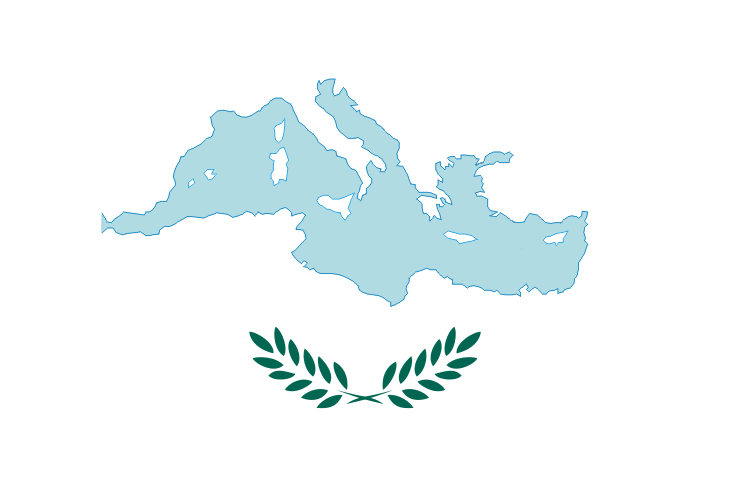

 Italy
Italy  Greece
Greece  Mediterranean
Mediterranean  Spain
Spain  France
France  Germany
Germany  France
France  Germany
Germany  Italy
Italy | Souvla (lamb, pork, chicken cooked on a skewer , garnished with oregano , salt and lemon) Souvlaki (same as souvla but smaller pieces , placed in a pitta bread with salad and tzatziki) Gyros (slices of pork , beef or chicken cooked slowly placed in a pitta bread with salad and tzatziki) Kontosouvli (Large pieces of meat and fat passed on a skewer) Kokoretsi ( traditional Greek dish made of animal giblets and cooked on a skewer) Pastitsio (Baked pasta dish with minced meat and bechamel sauce) Cyprus Ravioli (Ravioli filled with halloumi and mint) Sheftalia (minced pork, chopped onions, bread crumbs, chopped parsley, white pepper and salt) Keftedes (fried meatballs , usually pork , beef , chicken ) Trachanas Soup (is a type of soup with pasta made of flour and milk) Avgolemoni Soup ( type of soup with egg lemon and chicken) Koupes (Finger food sausage shaped made of bulgar wheat and filled with minced meat) Kolokasi (A bulb that is very similar to potato or sweet potato) Poulles ( Fried kolokasi) Patates antinahtes (Small potatoes fried in the pot with lots of salt and coriander) Resi (Wheat cooked with made , dish usually made for traditional cypriot weddings) Easter Pourgouri with Goat (Easter dish made of cuscus with goat meat cooked in a clay pot) Magiritsa Soup (Easter soup made with vegetables, dill, lamb giblets and rice) |
Knedlíky or dumplings are the Czech side dish made from wheat or potato flour and boiled in water as a roll and then sliced and served hot. Guláš (pronounced as “goulash“) Goulash (guláš in Czech) is a common dish in pubs.
Braised red cabbage more.... Netherlands
Netherlands sauerkraut, jellied meat and blood sausage are typical Estonian foods.
Apple coffee cake Roasted brussels sprouts with red pepper more.... Mediterranean
Mediterranean  Germany
Germany
 Belgium
Belgium This standard term for a Dutch dinner stands for Aardappel, Vlees, Groenten, or potato, meat and vegetables. A lot of Dutch households tend not to go for an existing dish, so much as a combination of these basic essentials.
Pea soup is a thick, hearty split pea soup with sausage and vegetables, often consumed during winter. A day after preparation, the soup has thickened and more meat is added, after which it becomes snert.
Potato, carrot and onion mash, often eaten in winter, usually with meat on the side.
Green peas soup more.... Switzerland
Switzerland
 Austria
Austria
 Germany
Germany
 Belgium
Belgium  France
France  Germany
Germany  Mediterranean
Mediterranean  France
France  Italy
Italy
 Mediterranean
Mediterranean  Germany
Germany  Belgium
Belgium  Spain
Spain  France
France  Italy
Italy  Germany
Germany
 Italy
Italy  Mediterranean
Mediterranean
Non-liquid ingredients in volume converted
|
|||||||
|---|---|---|---|---|---|---|---|
Ingredient |
1 cup |
3/4 cup |
2/3 cup |
1/2 cup |
1/3 cup |
1/4 cup |
2 tablespoons |
| All-purpose wheat flour | 120 g | 90 g | 80 g | 60 g | 40 g | 30 g | 15 g |
| All-purpose sifted wheat flour | 110 g | 80 g | 70 g | 55 g | 35 g | 27 g | 13 g |
| White sugar | 200 g | 150 g | 130 g | 100 g | 65 g | 50 g | 25 g |
| Powdered sugar/Icing sugar | 100 g | 75 g | 70 g | 50 g | 35 g | 25 g | 13 g |
| Brown sugar normally packed | 180 g | 135 g | 120 g | 90 g | 60 g | 45 g | 23 g |
| Corn flour | 160 g | 120 g | 100 g | 80 g | 50 g | 40 g | 20 g |
| Cornstarch | 120 g | 90 g | 80 g | 60 g | 40 g | 30 g | 15 g |
| Rice (not-cooked) | 190 g | 140 g | 125 g | 95 g | 65 g | 48 g | 24 g |
| Macaroni (uncooked) | 140 g | 100 g | 90 g | 70 g | 45 g | 35 g | 17 g |
| Couscous (uncooked) | 180 g | 135 g | 120 g | 90 g | 60 g | 45 g | 22 g |
| Quick oatmeal (uncooked) | 90 g | 65 g | 60 g | 45 g | 30 g | 22 g | 11 g |
| Table salt | 300 g | 230 g | 200 g | 150 g | 100 g | 75 g | 40 g |
| Butter / Margarine | 240 g | 180 g | 160 g | 120 g | 80 g | 60 g | 30 g |
| Shortening | 190 g | 140 g | 125 g | 95 g | 65 g | 48 g | 24 g |
| Fruits and légumes chopped | 150 g | 110 g | 100 g | 75 g | 50 g | 40 g | 20 g |
| chopped walnuts | 150 g | 110 g | 100 g | 75 g | 50 g | 40 g | 20 g |
| Nuts /ground almonds | 120 g | 90 g | 80 g | 60 g | 40 g | 30 g | 15 g |
| Fresh bread crumbs (not packed) | 60 g | 45 g | 40 g | 30 g | 20 g | 15 g | 8 g |
| Dry bread crumbs | 150 g | 110 g | 100 g | 75 g | 50 g | 40 g | 20 g |
| Parmesan grated | 90 g | 65 g | 60 g | 45 g | 30 g | 22 g | 11 g |
| Chocolate chips | 150 g | 110 g | 100 g | 75 g | 50 g | 38 g | 19 g |